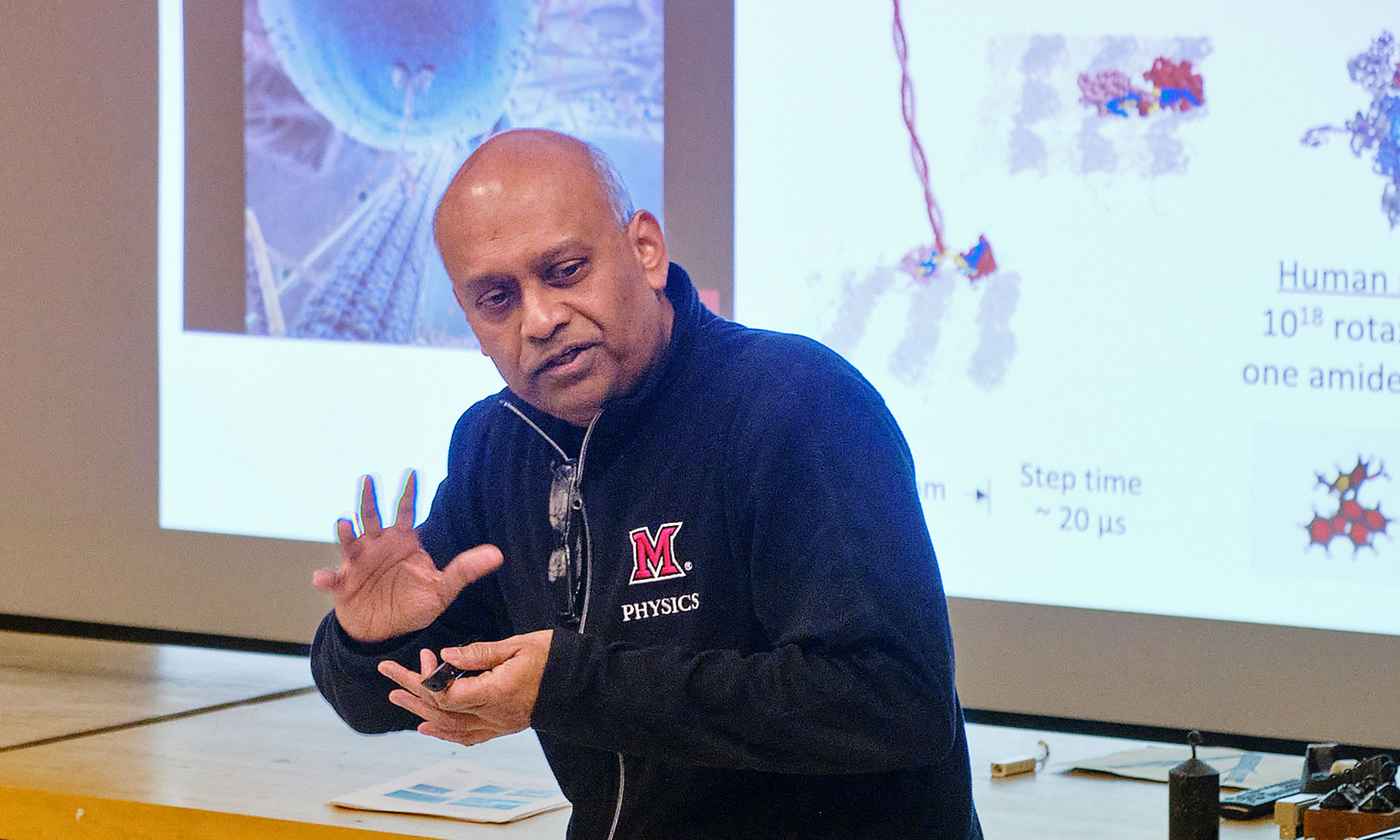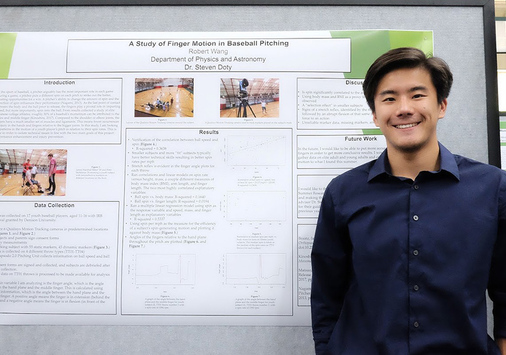
Samir Bali, a physics professor at Miami University, researches experimental quantum optics and optical physics, including novel optical sensing methods. In spring 2024, he presented a lecture, Observation of Stochastic Resonance in a Cold Atom Optical Lattice, to a Denison 400-level physics seminar.
He noted that scientists making sensitive measurements usually think of “noise” as undesirable energy from the environment that inevitably spills into the system. This degrades system performance.
For example, for atoms arranged in a periodic array by light (also known as an optical lattice), the principal obstacle to achieving controlled nanoscale atomic transport is that the directed motion of the atoms (i.e., the system performance) is overwhelmed by randomly directed recoils due to photon scattering (i.e., the noise).
Optical lattices are widely considered to be an architectural paradigm for developing new nanotechnology tools. The notion that the controlled addition of random noise fluctuations helps rather than hinders system performance is critical for the development of nano devices that can operate efficiently in noisy environments.
Current efforts to build efficient artificial nanomachines center on the counter-intuitive phenomenon of “stochastic resonance,” which refers to a peak in system response as the strength of the random noise increases.
Scientists suspect that naturally occurring bio-molecular motors rely on stochastic resonance to efficiently power the processes of life, outperforming state-of-the-art human-made nanomachines by many orders of magnitude.














